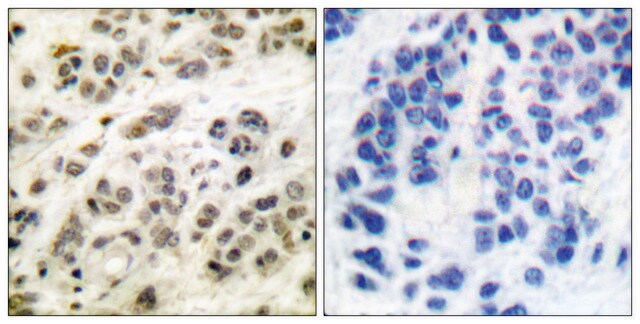SRP2089
C-myc, proto oncogene human
recombinant, expressed in E. coli, ≥80% (SDS-PAGE)
Sinônimo(s):
MRTL, bHLHe39, c-Myc
About This Item
Produtos recomendados
fonte biológica
human
recombinante
expressed in E. coli
Ensaio
≥80% (SDS-PAGE)
forma
frozen liquid
peso molecular
~50.4 kDa
embalagem
pkg of 5 μg
condição de armazenamento
avoid repeated freeze/thaw cycles
concentração
500 μg/mL
cor
clear
colorless
nº de adesão NCBI
nº de adesão UniProt
Condições de expedição
dry ice
temperatura de armazenamento
−70°C
Informações sobre genes
human ... MYC(4609)
Descrição geral
Ações bioquímicas/fisiológicas
forma física
Nota de preparo
Código de classe de armazenamento
10 - Combustible liquids
Classe de risco de água (WGK)
WGK 1
Ponto de fulgor (°F)
Not applicable
Ponto de fulgor (°C)
Not applicable
Certificados de análise (COA)
Busque Certificados de análise (COA) digitando o Número do Lote do produto. Os números de lote e remessa podem ser encontrados no rótulo de um produto após a palavra “Lot” ou “Batch”.
Já possui este produto?
Encontre a documentação dos produtos que você adquiriu recentemente na biblioteca de documentos.
Artigos
We present an article about how proliferating cells require the biosynthesis of structural components for biomass production and for genomic replication.
Nossa equipe de cientistas tem experiência em todas as áreas de pesquisa, incluindo Life Sciences, ciência de materiais, síntese química, cromatografia, química analítica e muitas outras.
Entre em contato com a assistência técnica